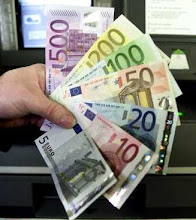Even though we try to prepare ourselves for all eventualities, sometimes things happen that we just couldn’t foresee. This article will teach you how to avert financial emergencies.
It is best to plan for an emergency before it happens. You should start an emergency fund that contains at least three months’ living expenses. Note that this is not just three months’ rent, but three months’ worth of money to cover all of your expenses: rent, utilities, car payments, daycare, groceries…everything.
Emergency money has to be something that you can access in an emergency. This means that you can’t have it in an investment that you won’t be able to get at. You might choose to keep it in a separate account than your normal account. The challenge is that if your money is easy to access, you might be tempted to use it for purchasing things on a day-to-day basis. Your emergency account is not for daily expenses or impulse purchases. It should be used for medical expenses, unexpected car repairs, and in case you lose your job.
Be wise with your emergency account. If there are layoffs happening at work, you might need to consider adding more money to your account. If your car repair bill is something you can cover without using your emergency money, don’t use your emergency money.
You need to choose an account that you will be able to access. You might choose to go with a savings account. You might also choose a money market account which will earn you more money. You want an account with no fees. Ask your banker about what account is best for you. Sometimes, to have no fees, you need to maintain a minimum balance in the account. This might even be an incentive to not spend the money in your account.
It might seem difficult to make payments into an emergency fund, especially if money is tight. Regardless, you should start with as little as $40 a month, or as much as you can afford (remember: more is better!) as your monthly payment. Treat your payment to the emergency fund as one of your bills: this is not an optional payment. The old adage “pay yourself first” is very true when applied to creating your emergency fund.
Once your emergency account has more than enough to cover three months of your expenses, take the extra money and put it in a short-term investment (possibly one-month). When that money matures, reinvest it with the interest. Continue reinvesting the money that you have on top of your three months’ expenses until you have enough money to make a larger investment.
Even once you have hit your goal of having an emergency fund, you need to continue making your monthly payments to yourself. Eventually you might decide that your monthly payments will be better going directly to an investment. Regardless, creating an emergency fund is the first step to financial security and investment planning.
Resource: http://www.isnare.com/?aid=75768&ca=Finances

No comments:
Post a Comment